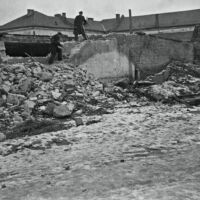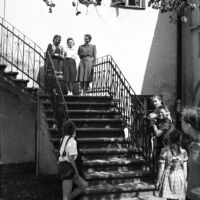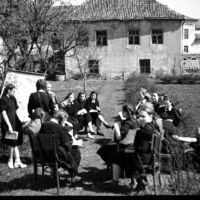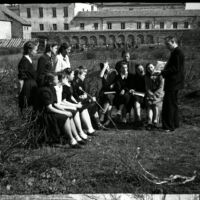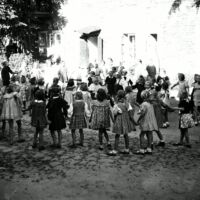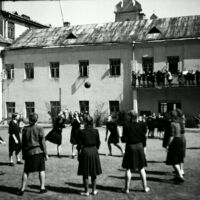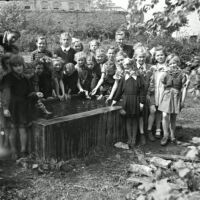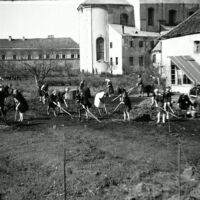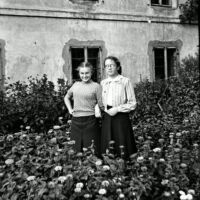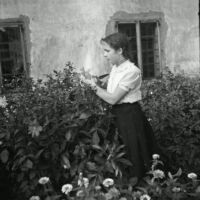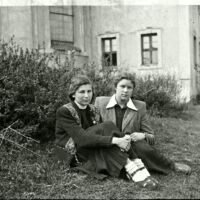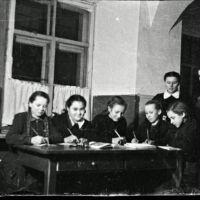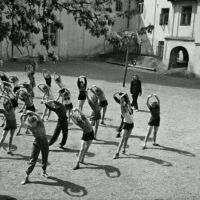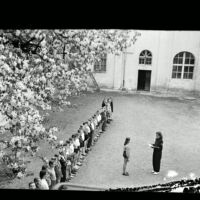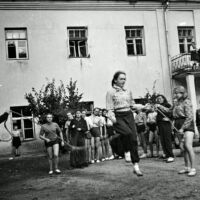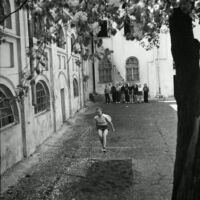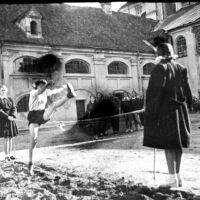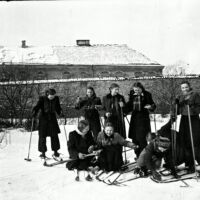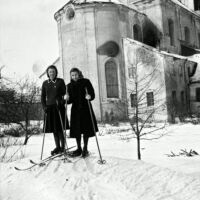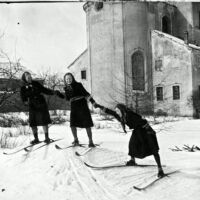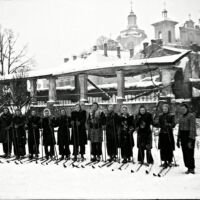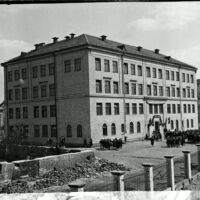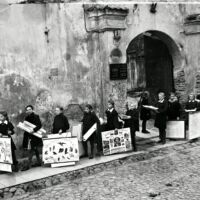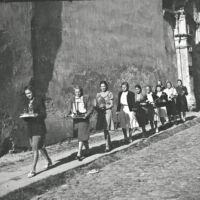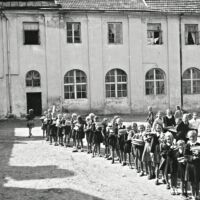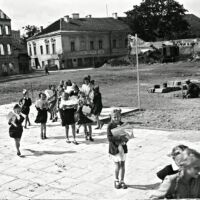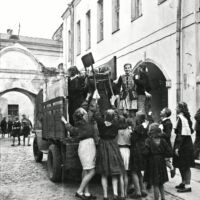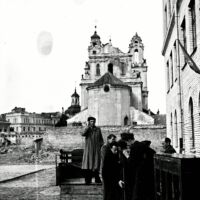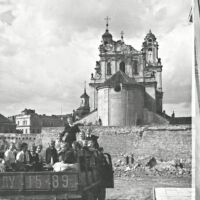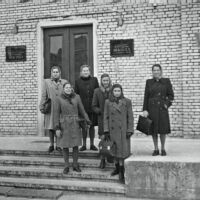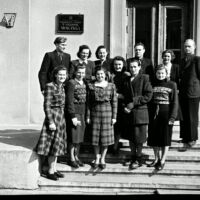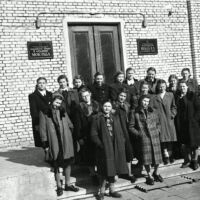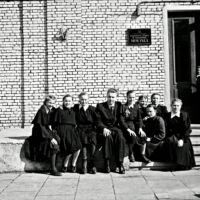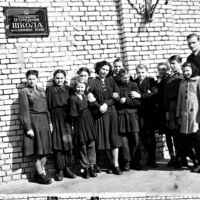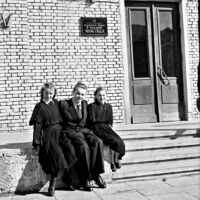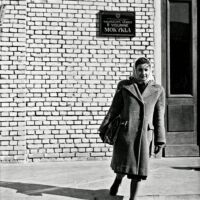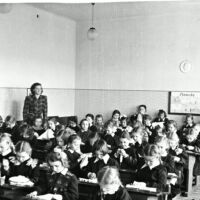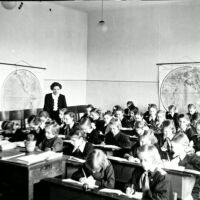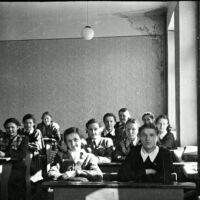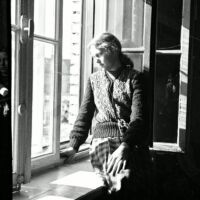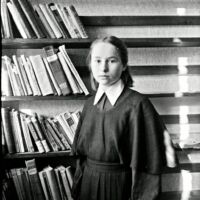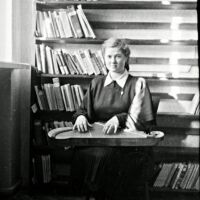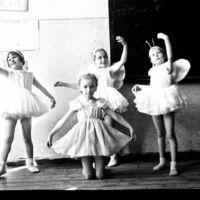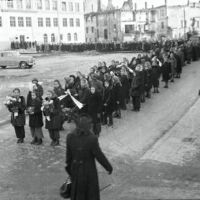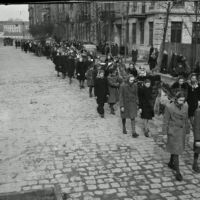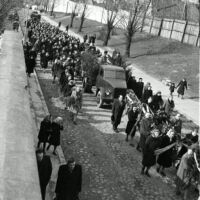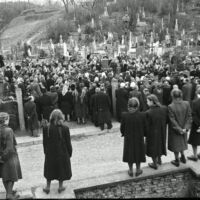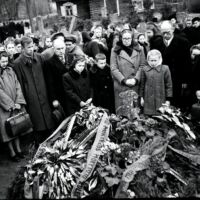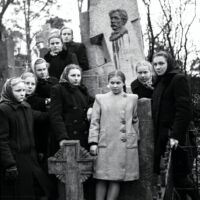In 1998, the famous folklore collector Jurgis Dovydaitis (1907–2001) submitted his extensive collection of folklore to the Lithuanian Folklore Archives of the Institute of Lithuanian Literature and Folklore. Along with other valuable materials this collection contains 800 photo rolls, which are currently digitalized by the archivists. This material is preserved as part of the Archive’s photo collections, making up the separate fund of Jurgis Dovydaitis (LTRFt D).
Here, part of the pictures taken by Dovydaitis in 1948–1953 in Vilnius are publicly displayed for the first time, revealing sights of the destroyed postwar city (No. 1, 2) and rather typical portraits of its inhabitants. A considerable number of the photos represents life and activities of a prestigious Soviet high school – Salomėja Nėris School (Nos. 3–50). Immediately after WWII this was the 2nd high school of Vilnius and it was housed in the premises of the former convent of the Benedictine Sisters situated by the Church of Saint Catherine of Alexandria in the Old Town of Vilnius. In 1946, the school was awarded the name of the famous female poet Salomėja Nėris (1904–1945). During the first postwar decade, it operated as school for girls, while in 1954 it was reorganized into a mixed school for boys and girls. A new building in Stalinist style for the school was constructed in 1951 to replace the houses demolished after the war in the course of the Soviet urban reconstruction efforts. This was the first school built according to the typical project No. 272 devised by N. Ginzberg at the Leningrad Design Institute; it was characterized by 4-stories, rectangular planning and corridor system, and accommodated 960 students.
Part of the photos (Nos. 3–22) show moments of everyday life until 1951, taking place in the school still housed in the convent premises. These include reporting on the activities in the school yard, and individual or group portraits of the students: exercising, skiing, working in the vegetable garden, or taking leisure moments during school breaks.
Pictures (No. 23–30) give evidence on the moving of the school inventory in 1951, when school was transferred into the newly constructed building. There are several group portraits of teachers and students posing at the central entrance of the new school building, pictures of classes and school festivals, portraits of students in the school premises etc. (Nos. 31– 44).
Several photos (Nos. 45–50) depict funeral of the renowned public figure of the Vilnius region, Lithuanian journalist and pedagogue Vincas Budrevičius (1880–1953), who taught mathematics in this school in 1944–1953 and was subsequently buried in the historical Rasos Cemetery in Vilnius.
***
Lithuanian theater critic, playwright and writer Gražina Mareckaitė remembers her years spent attending the post-war Salomėja Nėris School in Vilnius in the following way:
The Komsomol-style school for girls bearing the name of Salomėja Nėris was placed after the war in the picturesque baroque ensemble that had survived explosions and bombings – the former convent of the Benedictine Sisters situated by the Church of Saint Catherine. These premises looked like having descended from some fantasy-world: a maze of corridors, vaulted passages, small rusty iron doors, and a courtyard visible through a narrow opening that did not seem to exist; wooden stairs that led nowhere, and empty spaces overgrown with wild grapes. In the neighborhood demolished and burned down at the end of the war, the school garden inherited from the convent and separated by a high brick wall embodied a delightful green oasis. In this garden, against the background of salad beds and greenish gooseberries several dark figures used to work, as if sketched in charcoal. These were Benedictine sisters surviving wars and plagues, and forgotten by time. We would often see them through the class windows. They would not talk or otherwise communicate with anyone (had they given vows of silence?). If accidentally encountered in the narrow vaulted passage, such a dark weightless being would immediately disappear behind the rusted doors.
(Gražina Mareckaitė. neIšmaniųjų metas. Vilnius: „Charibdė“, 2016)


